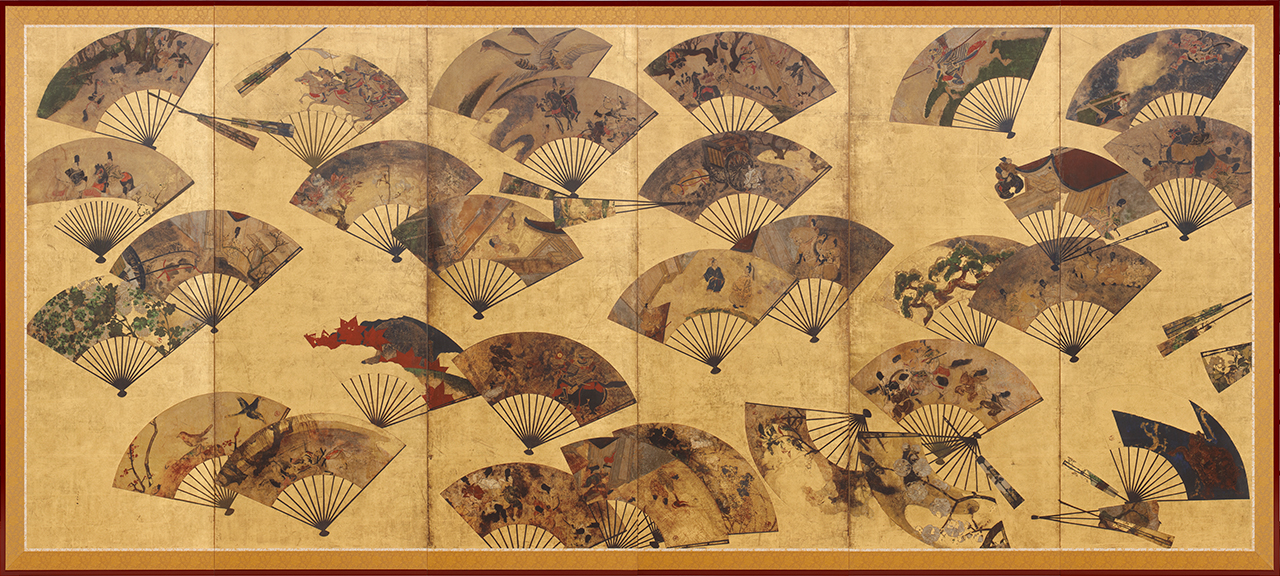Screen with Scattered Fans
DATA
- Artist:
- Tawaraya Sotatsu
- Historical era:
- Edo (17th century)
- Material:
- printed, gold on washi paper
- Medium:
- six-fold screen
- Theme:
- High Resolution Facsimile of Japanese Art Abroad
- Size:
- H 154.5 x W 362 cm
- Recipient:
- Kanazawa Colledge of ArtMAP
[Original]
- Current owner:
- Smithsonian's National Museum of Asian Art
- Material:
- Ink, color, and gold on washi paper
DESCRIPTION
Folding fans were invented in Japan, and can trace their roots back as far as the Nara era (in the eighth century.) In addition to being used as tools to cool the body, fans were carried as fashion accessories, and also featured at festivals and in public entertainment; as such, they developed close ties with both painting, waka poetry, and other art forms.
“Screen with Scattered Fans” is a six-fold screen on which 42 beautiful fans pasted,each fan taking motifs mainly from the Tale of Hogen, the Tale of Heiji and the Kitano Tenjin Engi (legends about the origin of Kitano Tenjin Shrine), and birds, flowers, and plants. Artworks on which opened fans are scattered at various angles are known in Japanese as “senmenchirashi.” They are auspicious patterns, and continue to be widely loved today.
“Screen with Scattered Fans” was painted by Tawaraya Sotatsu, one of the founders of the Rinpa school. Much of Sotatsu’s life is shrouded in mystery, but it is thought he owned an painter’s studio named “Tawaraya” in Kyoto, where he created designs and underdrawings for booklets and scrolls. Sotatsu’s painted fans were so highly regarded that, in Kyoto, fans became synonymous with his studio; indeed, it was these fans that formed the foundation for his subsequent fame.

